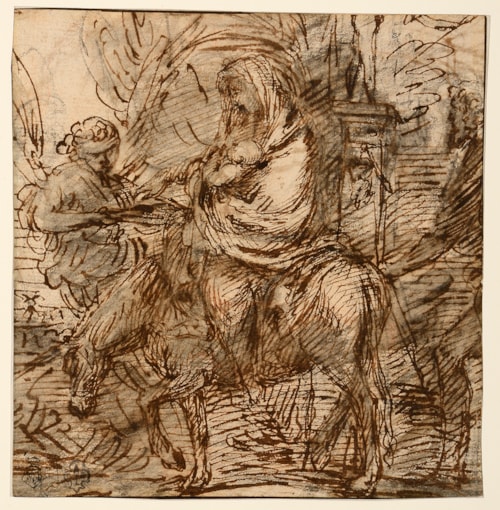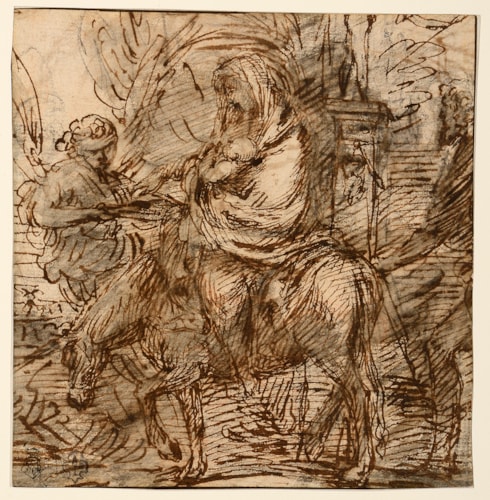
Attributed to Pedro Atanasio BOCANEGRA
Granada 1638 - Granada 1688
Biography
A native of Granada, Pedro Atanasio Bocanegra is thought to have been a pupil of Alonso Cano (1601-1667), the leading artist in the city at the time, in the 1650s. He may certainly be considered as one of Cano’s closest followers, and much of his painted oeuvre is indebted to the example of the older artist, whom he may have assisted on a series of large paintings of the Life of the Virgin for the Cathedral in Granada, between 1662 and 1664. Little is known of Bocanegra’s life and career, which seems to have been mostly spent in Granada. He worked at various churches and convents in the city, and in 1673 was named the maestro pintor of the Cathedral. Bocanegra’s paintings show, apart from Cano, the influence of another local painter, Pedro de Moya, as well as the work of Anthony Van Dyck, filtered through his prints. In 1676 he was summoned to the court in Madrid, but his work did not find favour there and he soon returned to Granada.
As a draughtsman, Bocanegra’s style is also largely dependent on the example of Cano’s pen drawings, which he is thought to have had access to, and may sometimes have copied. Only a handful of drawings have been firmly attributed to Bocanegra, including sheets in the Louvre and the Uffizi. As Lizzie Boubli has noted of Bocanegra, ‘very few drawings can be considered as from his hand...But they show an independence from the art of Cano and an original talent.’


